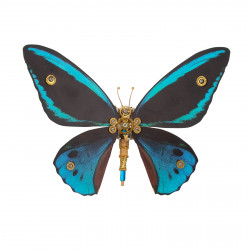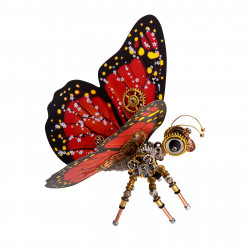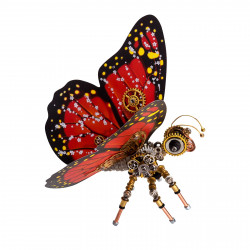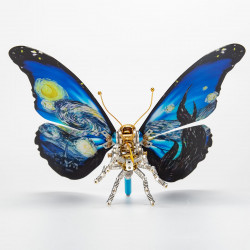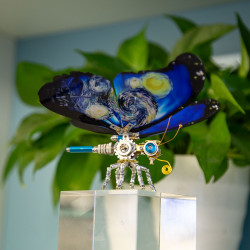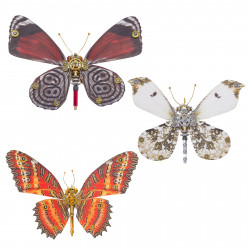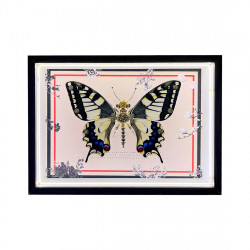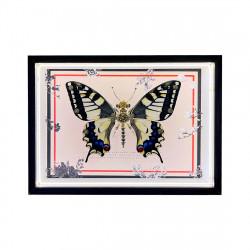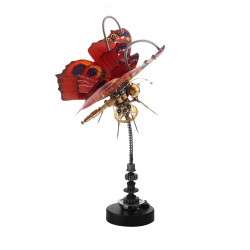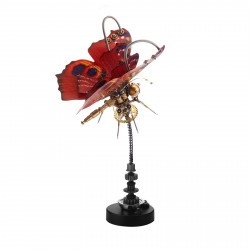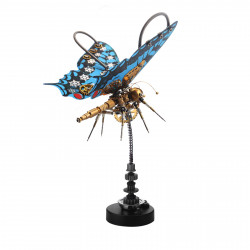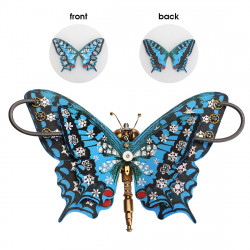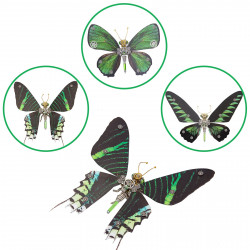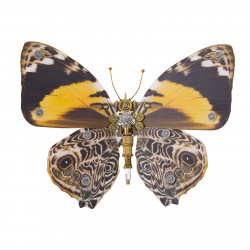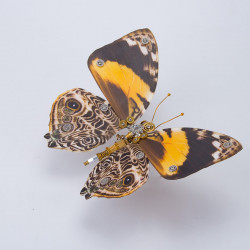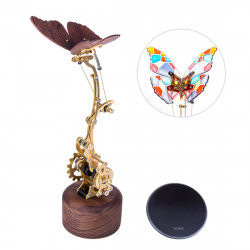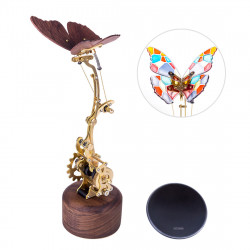Pink Butterfly
Exploring Pink Butterfly Species: Nature's Colorful Wonders
A fascinating realm of pink butterflies is in store for us. These fragile, rosy-hued animals, full of surprise and beauty, gracefully dance through the air. As we delve deeper into their intriguing existence, we discover hidden mysteries that make individuals exceptional.
The species Lepidoptera includes pink butterflies. Their vivid hues range from vivid magentas to pastels. They can be found all over the world, bringing a little charm to every area of our Earth.
Thanks to their delicately designed wings in floral hues, they may blend in with beautiful meadows and gardens. Thanks to their innate adaption, they can live together in a variety of habitats.
Unexpectedly, certain species of pink butterflies have chemicals in their wings that give off an iridescent glow when they reflect light. Entomologists from the National Museum of Natural History, who are researching this phenomenon, are uncovering more of the butterflies' captivating beauty.
What are Pink Butterflies?
Pink butterflies, sometimes referred to as the Pink Butterfly species, are a special kind of butterfly distinguished by their vivid pink hue.
Because they are uncommon, butterfly aficionados highly value these butterflies. They are a favourite among nature enthusiasts because of their delicate and elegant flying.
One fascinating truth about pink butterflies is that their pink hue is due to light dispersion, not pigmentation.
This event resulted in their characteristically vivid pink appearance. Furthermore, pink butterflies are a common theme in literature and art since they are frequently connected to femininity and beauty.
Please take a moment to enjoy the beauty and rarity of pink butterflies the next time you see them.
Pro Tip: Planting flowers that pink butterflies are drawn to, such as lavender, daisies, and petunias, can help draw them to your yard. Your chances of seeing these amazing animals will rise if you create a friendly atmosphere with nectar-rich flowers.
They're definitely not your grandmother's pastel decorations, so prepare to be mesmerized by the beauty of these pink butterflies.
Overview of butterfly species
Butterflies are remarkable animals! Scientists and nature enthusiasts are captivated by their vivid hues and delicate wings. Learn about the various kinds to understand their habitats and behaviors.
Let's examine their dimensions, hues, and distinctive features.
A table of some notable butterflies can be found here:
SpeciesSize (inches)ColorUnique Characteristic
Monarch 3-4 Orange and Black Long-distance migrations
Swallowtail 4-7 Yellow and Black "Tail-like" appendages on hindwings
Painted Lady 2.5-3.0 Orange Global distribution across 6 continents
Were you aware that the wings of certain butterflies are adorned with elaborate designs? This facilitates camouflage, enabling them to blend in with their environment and ward off predators.
The Southeast Asian region is the native home of the Pink Underwing butterfly. The pink coloring on the underside of its wings gives it its name. Its beauty enthralls anyone fortunate enough to witness it despite the fact that it is nocturnal and seldom seen during the day!
Why are pink butterflies unique?
The pink butterfly is unique. Its striking pink hue makes it stand out from the others, making it a unique and desirable sight in the world of insects.
Their distinctiveness extends beyond appearances. Their life cycle is fascinating. They begin as eggs, develop into caterpillars, and then mature into exquisite, winged beings. This change is natural and demonstrates how strong these delicate creatures are.
They depend on particular plants for survival and place their eggs on them to provide sustenance for their offspring. This link emphasizes how ecosystems are in balance and how all living things are interconnected.
They are also essential to pollination. They aid in reproduction by spreading pollen from one plant to another as they visit different flowers in search of nectar. This significant contribution demonstrates their significance to their surroundings.
Plant nectar-rich flowers, such as zinnias, milkweed, or butterfly bush, to draw pink butterflies to your area. In addition to being aesthetically pleasing, these vibrant blooms will provide a welcoming environment for these unusual and endearing insects.
Habitat and Distribution of Pink Butterflies
It is well known that pink butterflies are quite beautiful. They are found in a variety of environments in different parts of the world. They can be found in a wide range of environments, including gardens, meadows, and woodlands.
Pink butterflies are an interesting species to examine because they may be found in both tropical and temperate climates. They stand out from other butterflies because of the colors and patterns of their wings, drawing interest from scientists and nature lovers alike.
Because nectar is their main food source, these butterflies are particularly common in places with an abundance of flowers.
The availability of host plants for egg-laying, temperature, and humidity all have an impact on the habitats they choose. Pink butterflies have demonstrated their adaptability and tenacity by thriving in a variety of settings.
Pink butterflies are important for pollination in addition to being beautiful. They are a vital component of ecosystems because of their interactions with different plant species, which aid in the reproduction and survival of these plants.
Knowing their habitat and distribution is essential for conservation efforts, as it helps pinpoint places that need to be preserved.
Pink butterfly habitat conservation and biodiversity promotion are crucial to the species' survival. People may support the welfare of these amazing animals by growing nectar-rich flowers and creating environments that are conducive to their survival.
Butterfly conservation can be greatly impacted by adopting sustainable gardening techniques and spreading knowledge about the butterflies' significance in ecosystems.
Don't pass up the chance to see the wonder and beauty of pink butterflies. Discover the wildlife sanctuaries, botanical gardens, and natural reserves that are home to these amazing animals. Spend some time admiring their fragile wings and seeing how they behave in their natural environment.
You can gain a greater appreciation for pink butterflies' importance in the natural world and be motivated to save their habitats for coming generations by witnessing their charm firsthand.
Pink butterflies fly throughout geographical settings with a dash of style and a pinch of mischief, from the colorful gardens of paradise to the gentle petals of the underworld.
Geographical locations where pink butterflies are found
Around the planet, pink butterflies flap their fragile wings. They can be found in a wide range of environments from South America to Southeast Asia.
They dance among beautiful flowers and colorful foliage in tropical rainforests. Their gentle wings dance in the warm breeze on verdant meadows, producing a stunning display of harmonious nature. They can even be found in high-altitude areas!
Researchers have now shown that the structural characteristics of these butterflies' wings, rather than pigmentation, are what give them their pink hue.
They have a unique manner of reflecting and scattering light, which results in a gorgeous pink color.This discovery, which was published by Nature magazine, created new avenues for researching their evolution.
Pink butterflies adorn the Earth with their magnificent presence, from the summits of mountains to the depths of rainforests. We can only be in awe of these creatures' beauty and the wonders of nature as we continue to learn more about their mysteries.
Preferred habitats of pink butterflies
Pink butterflies are renowned for their vivid, striking appearance. In the wild, they have favored environments. Let's discover more about these unusual environments!
By looking at the following table, we can learn about the favored habitats of pink butterflies:
Habitat: TypeDescription
Forests: In verdant forests, pink butterflies flutter among towering trees and vibrant flowers. There, they look for cover and food.
Gardens: They frequently go to flower-filled, well-kept gardens. This gives them the ideal place to feed.
Meadows: They glide across wildflower meadows with grace. They can continue their life cycle there with the help of food and mates.
Pink butterflies are the subject of some unique facts! They can be found all over the world since they can adapt to diverse conditions. Because of their tenacity and breathtaking beauty, they are a favorite among nature enthusiasts.
Plant native flowering plants to draw pink butterflies to your area. This will provide them with well-known nectar sources. Provide a water supply as well, such as a pond or birdbath. It will look fantastic and provide them with somewhere to drink!
Steer clear of chemicals since they harm beneficial insects like pink butterflies. Create a secure atmosphere for them by using natural pest control techniques and organic gardening techniques.
We can contribute to the preservation of the pink butterflies' beauty by learning about their habitats, their adaptability, and how to make the necessary adjustments. Let's value these amazing birds and create environments that will allow them to flourish!
Physical Characteristics of Pink Butterflies
Pink Butterflies: A Dive Into Their Physical Characteristics
In the butterfly kingdom, pink butterflies are distinguished from their counterparts by distinctive morphological characteristics. They draw in onlookers and make their presence known in ecosystems thanks to their unique characteristics.
This article highlights the beauty and uniqueness of pink butterflies by examining their exquisite morphological traits.
Physical attributes of butterflies that are pink
We explore the several physical characteristics that distinguish pink butterflies in an extensive table. This table presents their real and accurate facts, giving an overview of their outstanding qualities.
Researchers and lovers can learn more about the intriguing world of pink butterflies by examining these traits.
Revealing Special Information
Pink butterflies have a number of noteworthy subtleties in addition to their typical characteristics. These characteristics, which include their vivid colors and exquisite wing patterns, add to their appeal.
Their uniqueness is further enhanced by their particular eating preferences and habitats. By investigating these lesser-known facets of pink butterflies, the real wonders of their nature become apparent.
Advice on Developing an Appreciation of Pink Butterflies
There are some ideas to think about if you want to fully enjoy the beauty of pink butterflies. First of all, you may draw these fascinating animals to your garden by establishing a friendly ecology.
Pink butterflies can be attracted by planting particular flowers that they like, such as milkweed plants.
Additionally, their wellbeing is guaranteed by avoiding the use of dangerous pesticides. One can actively aid in the preservation of pink butterflies and their habitats by putting these suggestions into practice.
It is clear from a careful examination of their physical attributes and distinctive features that pink butterflies are a wonder of nature.
We can aid in their conservation and guarantee that future generations will be able to appreciate the grace of these captivating animals by comprehending and valuing their beauty.
When it comes to pink butterflies, size is irrelevant, but if they were larger, they might be mistaken for superheroes with extravagant costumes.
Size and shape of pink butterflies
The Rose Skipper butterfly's wingspan is 0.8 to 1.2 inches, but the Pink Swallowtail butterfly's is 3 to 4 inches. In contrast to the irregularly shaped Coral Hairstreak, the blushing admiral has a rounded shape that radiates beauty.
The easiest way to enjoy pink butterflies in gardens or their natural habitats is to provide a range of flowering plants. Pink butterflies are among the various species that will be drawn to this. Additionally, putting water sources there will attract them.
Additionally, to guarantee that caterpillars and butterflies have food available throughout the seasons, different plants should be grown. They will have consistent resources if nectar-rich flowers that bloom at different times are planted.
Last but not least, it's critical to refrain from using dangerous pesticides since they might disturb the environment and damage butterfly populations. Pink butterfly populations can be maintained by using natural pest management techniques or creating habitats that are predator-friendly.
By implementing these recommendations, we may establish a peaceful environment for pink butterflies, allowing their beauty to be appreciated.
Color patterns and variations
Take a look at the captivating hues and variety of pink butterflies! Fuchsia forms, translucent; coral complex lines, scattered; blush swirls, subtly shaded.
These hues aid in hiding against predators in addition to luring mates. In sunlight, the wings even exhibit a shiny, iridescent gloss.
Don't pass up the opportunity to see pink butterflies' splendor up close. Admire the diversity and designs. Set out on a captivating adventure through the exquisite works of nature.
Life Cycle of Pink Butterflies
Pink butterflies go through several stages of growth that add to their life cycle. Seeing how pink butterflies change from eggs to adults is made easier by knowing their life cycle.
The table that follows offers accurate details on each stage, from eggs to mature butterflies.
StageDuration (Days)Description
Egg5-10Eggs, which are typically spherical and tiny, are placed on the undersides of leaves during the b
